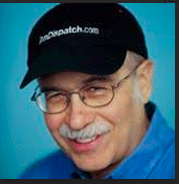"Yes, of course," he answered, pulled back on the reins, and shouted, "Whoa mule! Whoa mule!" The mule stopped. He then instructed me to stand right behind the plow while he stood behind me. He held the reins in his right hand, lifted me up under his left arm, and placed my hands on the handle of the plow. He made a clicking sound toward the mule and off we went. After a few minutes, the mule slowed down, lifted its tail, and grunted, making a bowel movement. The foul smell hit us in the face. Mr. Fuller and I laughed. He didn't seem to mind the smell of the manure, and when we saw that he was also stepping in it, we stopped to laugh some more.
"Will it hurt the garden plants?"
"No, it will help the plants," he answered. "It's what's called fertilizer. The fertilizer and the nutrients in the soil help the plants to grow. Sometimes we think something is a waste, but it helps us live." Mr. Fuller put me down as we talked.
"How did you learn all this stuff, Mr. Fuller?" I asked, intrigued and curious.
"I went to college, but I learned a lot of it from my daddy. College is the place you go to learn things and it is important for colored people."
A few years later Mr. Fuller told me he had attended the Hampton Normal and Agricultural Institute in Virginia, a school established by White people in 1868 to train Native Americans and Blacks to become teachers and learn trades in agriculture, cabinetmaking, printing, and tailoring. He graduated in agriculture.
On every visit, after that first talk, Mr. Fuller would make a clicking sound and off we would go to continue plowing until I got tired. Then we'd stop under a shady tree overlooking the garden and discuss what seemed to me like everything in the world. Mr. Fuller always had a lunchbox with a mason jar of water, grapes, an apple, a sandwich, and cake. He always seemed to have food for me, too, and when I asked how come, he responded, "I just do," then adding, "I thought you might come by to see me."
When I became more knowledgeable about my place in the world during my teen years, I began to ask Mr. Fuller about his past. Did he remember slavery? "No," he responded with a laugh, "I am not that old, but my parents were slaves as children -- I learned a lot from them, yes, I did." He gazed at me intently.
Born in 1881, in Kinston, North Carolina, he was in his mid-sixties when, at five and six years old, I visited him in his garden plot. So, although he spoke to me of many things, he did not disclose parts of his story which I imagine he thought might frighten me. He left out, in fact, certain fearful, seminal events of his youth that I now know occurred in the nearby city of Wilmington, North Carolina, before he reached the age of 20.
The Wilmington Massacre of 1898
Wilmington is a mere 87 miles from Kinston. On November 10, 1898, a mob of 1,500 White supremacists marched into the Black section of town, burned down the Black newspaper office building, and killed up to 100 Black people.
White-supremacist-directed violence was increasing there for two significant reasons then: growing Black political power and editorials written by Alex Manly for the local Black newspaper, The Daily Record, condemning miscegenation laws. Manly was on the list of Blacks to be killed that day. However, he had been warned and so escaped a few days prior to the mob violence. Manly had written that it was no worse for a Black man to be intimate with a White woman than for a White man to be intimate with a Black woman. In reaction, the White racist community distributed his editorial widely and used it as a pretext for the mass killing of Blacks that followed.
Mr. Fuller was 17 at the time of those murders. Living in Kinston, he couldn't have escaped the fear and tension. If you were Black and so close to atrocities committed by Whites, fear traveled and spread fast.
Reconstruction -- Violence Against Black People After the Civil War
Mr. Fuller was born a few years after Reconstruction (1865-1877), the period following the Civil War during which the United States sought to reintegrate the southern states into the union and deal with the status of Black people. It was also a time when White supremacist groups like the Ku Klux Klan and White Citizens Councils used extreme violence against Black people to keep them from becoming full citizens, a time when an estimated more than 2,000 Blacks were lynched, the ultimate form of terror.
Like my grandparents during their young adult years, Mr. Fuller, inspired by the lives of Frederick Douglass, Harriet Tubman, and others, began to see glimmers of hope in the views of W.E.B. DuBois, Marcus Garvey, Carter G. Woodson, the poetry of Paul Lawrence Dunbar, and the exhortations of Ida B. Wells and Mary McLeod Bethune. Activists of that era were developing ideas about community, education, organizing, survival, and being responsible for others that would bode well for future Black generations. The accomplishments of Blacks of that era fed the development of much that was to come in politics, education, and the arts, and remain part of a centuries-long struggle to move this country toward the sort of authentic democracy that Donald Trump stands strongly against.
(Note: You can view every article as one long page if you sign up as an Advocate Member, or higher).





